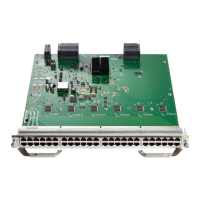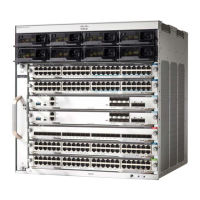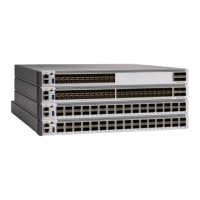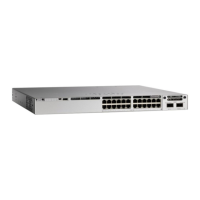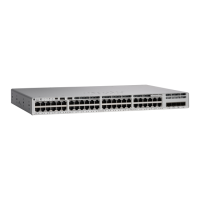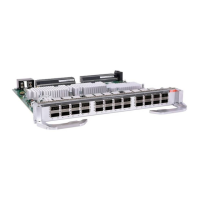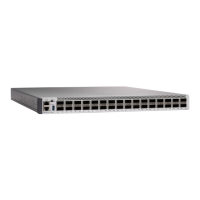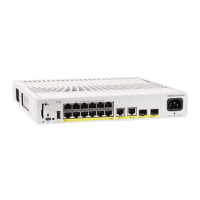It gives you the option of assigning a Telnet password (to provide security during remote management) and
configuring your switch as a command or member switch of a cluster or as a standalone switch.
Use a DHCP server for centralized control and automatic assignment of IP information after the server is
configured.
If you are using DHCP, do not respond to any of the questions in the setup program until the device receives
the dynamically assigned IP address and reads the configuration file.
Note
If you are an experienced user familiar with the device configuration steps, manually configure the device.
Otherwise, use the setup program described in section Device Boot Process, on page 41.
Default Switch Information
Table 4: Default Switch Information
Default SettingFeature
No IP address or subnet mask are defined.IP address and subnet mask
No default gateway is defined.Default gateway
No password is defined.Enable secret password
The factory-assigned default hostname is device.Hostname
No password is defined.Telnet password
Disabled.Cluster command switch functionality
No cluster name is defined.Cluster name
DHCP-Based Autoconfiguration Overview
DHCP provides configuration information to Internet hosts and internetworking devices. This protocol consists
of two components: one for delivering configuration parameters from a DHCP server to a device and an
operation for allocating network addresses to devices. DHCP is built on a client-server model, in which
designated DHCP servers allocate network addresses and deliver configuration parameters to dynamically
configured devices. The device can act as both a DHCP client and a DHCP server.
During DHCP-based autoconfiguration, your device (DHCP client) is automatically configured at startup
with IP address information and a configuration file.
With DHCP-based autoconfiguration, no DHCP client-side configuration is needed on your device. However,
you need to configure the DHCP server for various lease options associated with IP addresses.
If you want to use DHCP to relay the configuration file location on the network, you might also need to
configure a Trivial File Transfer Protocol (TFTP) server and a Domain Name System (DNS) server.
System Management Configuration Guide, Cisco IOS XE Bengaluru 17.4.x (Catalyst 9400 Switches)
45
Performing Device Setup Configuration
Default Switch Information
